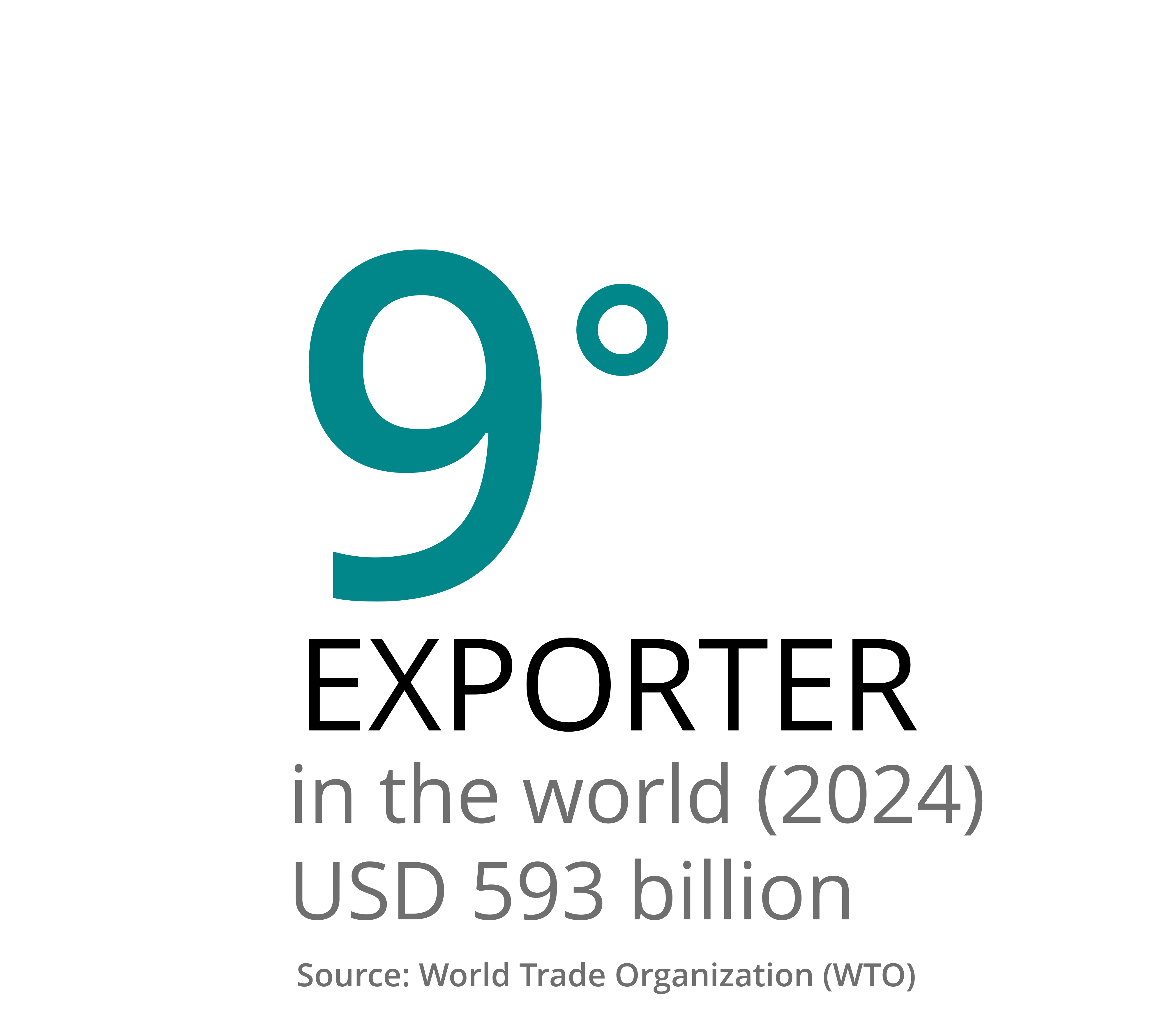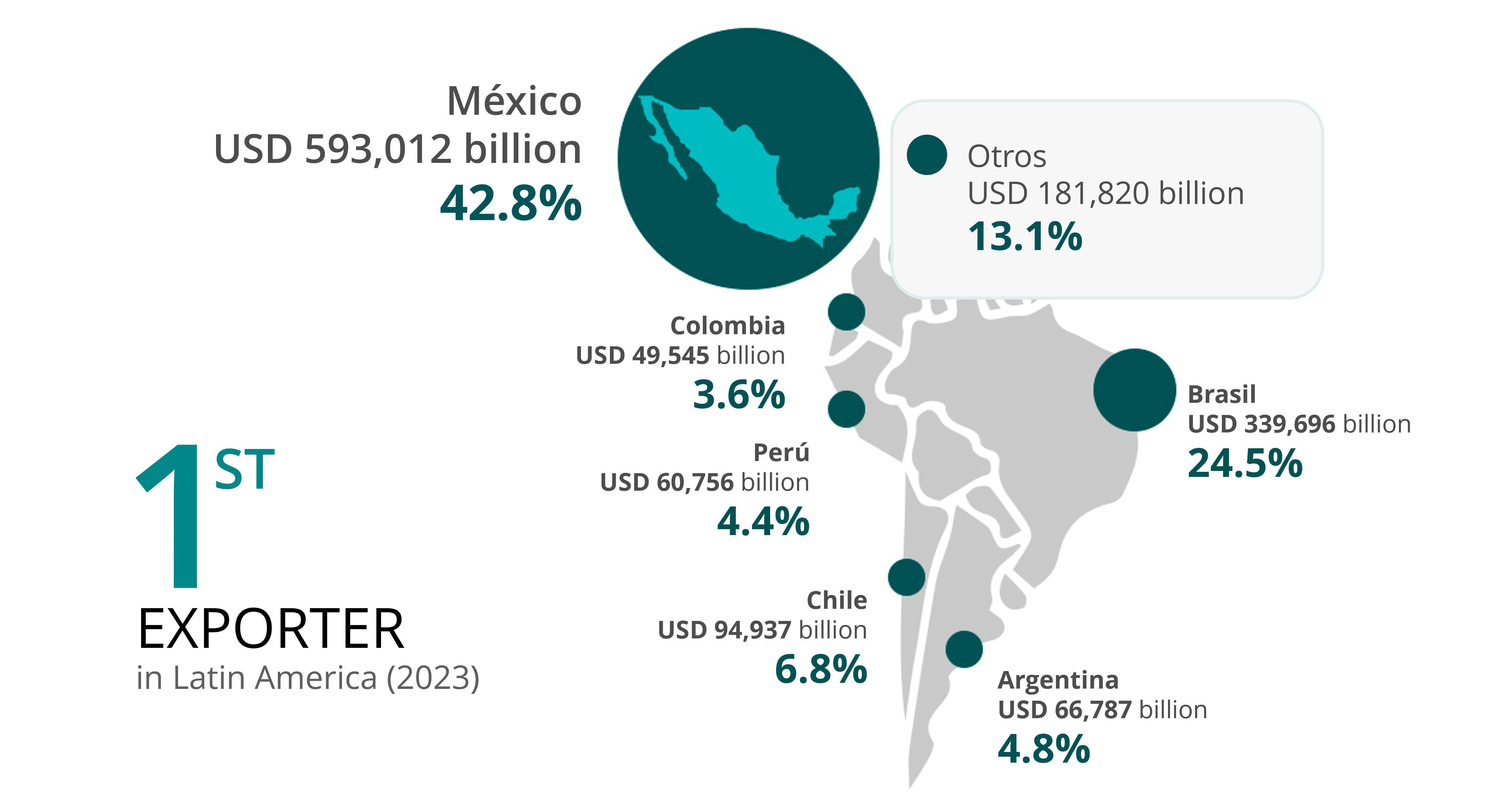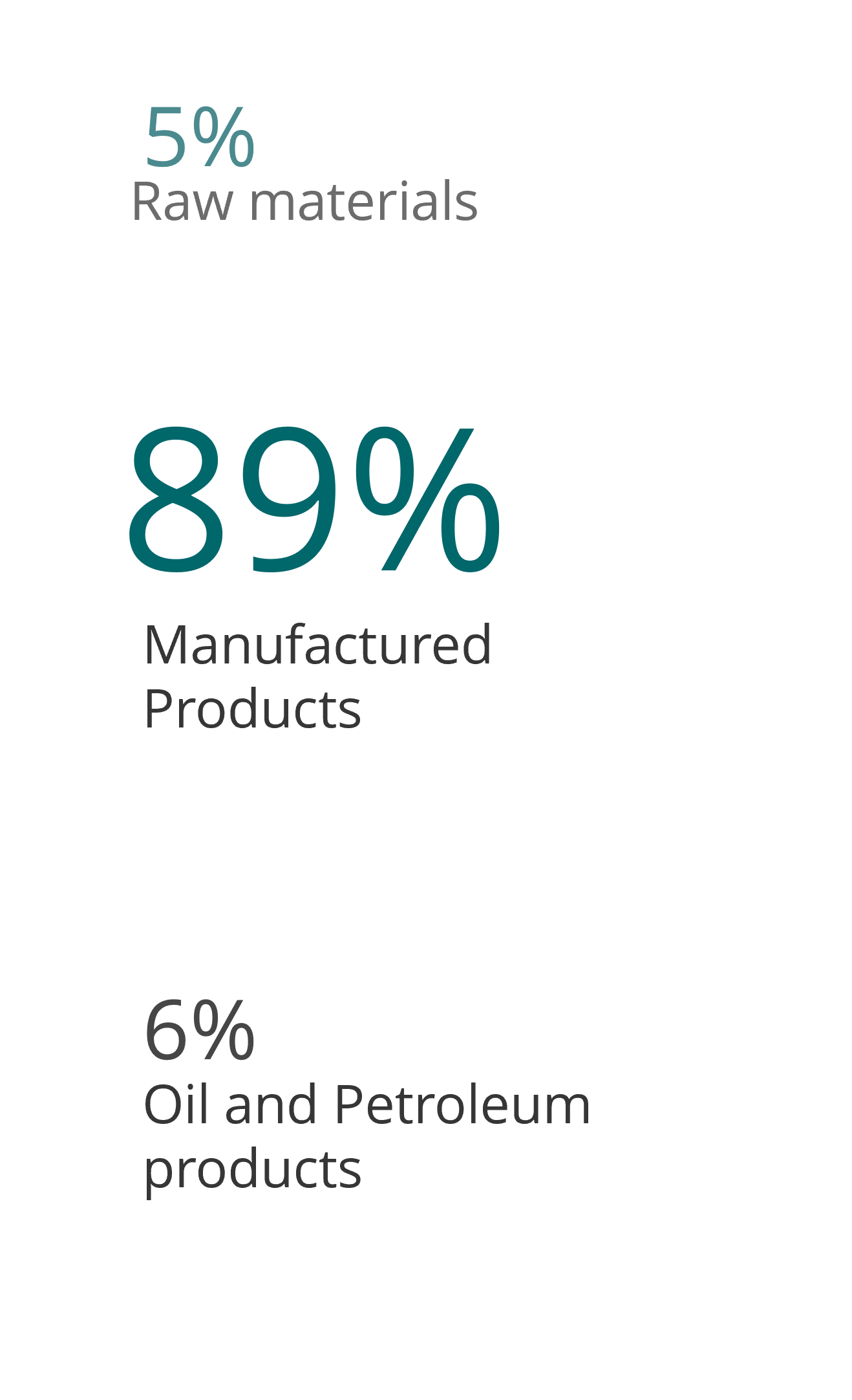Last review date: May, 2024
Commercial Strength
In the 80’s, Mexico began an important process of economic and commercial openness focused on the diversification of its exports, which today positions it at a global level. According to data from the World Trade Organization, in 2023 exports of goods and services from Mexico totaled more than 593 billion dollars, placing the country as the 9th largest exporter and 12th largest importer in the world. Mexican exports of goods and services are expected to maintain sustained growth in the coming years, according to International Monetary Fund (IMF).

In 2023, Mexican exports represented 42.8% of Latin American total exports, and consolidated as the leader exporter of the region.[1]. It is important to mention that Mexico stood for more than 50% of the region’s exports of manufactures involving intermediate and advanced technologies.
[1] World Bank, 2021

Actually, Mexico has a solid and mature industry, especially in sectors such as metal mechanic, aerospace, automotive, electrical and electronic. As a result, Mexican exports of industrialized goods, particularly those with high added value, have shown an important growth compared with oil related products and raw materials.

Mexico has signed 14 Free Trade Agreements with 50 countries and an Economic Partnership Agreement with Japan that provide preferred access to Mexican goods and services to the most important markets in the world. The purchase power of this markets represent more than 50% of the gross world product, and more than 1.1 billion people.
USMCA
| In Force Since | Countries | % of Gross World Product | Population (million) |
| 07/01/2020 |
United States Canada |
28.18 | 365 |
European Union Free Trade Agreement
| In Force Since | Countries | % of Gross World Product | Population (millon) |
| 7/1/2000 | Germany Austria Belgium Bulgaria Cyprus Croatia Denmark Slovakia Slovenia Spain Estonia Finland France Greece Hungary Ireland Italy Latvia Lithuania Luxembourg Malta Netherlands Poland Portugal Czech Republic Romania Sweden |
20.72 | 447 |
Economic Partnership Agreement Japan
| In Force Since | Country | % of Gross World Product | Population (million) |
| 4/1/2005 | Japan | 4.02 | 126 |
European Free Trade Association
| In Force Since | Countries | % of Gross World Product | Population (million) |
| 10/1/2001 | Iceland Liechtenstein Norway Switzerland |
1.34 | 14 |
Colombia FTA
| In Force Since | Countries | % of Gross World Product | Populaton (million) |
| 1/1/1995 | Colombia | 0.35 | 50 |
Chile FTA
| In Force Since | Country | % of Gross World Product | Population (million) |
| 8/1/1999 | Chile | 0.32 | 19 |
Israel FTA
| In Force Since | Country | % of Gross World Product | Population (million) |
| 7/1/1999 | Israel | 0.49 | 9 |
Peru FTA
| In Force Since | Country | % of Gross World Product | Population (million) |
| 2/1/2012 | Peru | 0.26 | 32 |
Central America FTA
| In Force Since | Countries | % of Gross World Product | Population (million) |
| 7/1/2013 | El Salvador Nicaragua Honduras Costa Rica Guatemala |
0.26 | 44 |
Uruguay FTA
| In Force Since | Country | % of Gross World Product | Population (million) |
| 7/15/2004 | Uruguay | 0.07 | 3.4 |
Panama FTA
| In Force Since | Country | % of Gross World Product | Population (million) |
| 7/1/2015 | Panama | 0.08 | 4 |
The Pacific Alliance includes Mexico, Chile, Colombia and Peru, and constitutes a platform that promotes cooperation with the Asia-Pacific region. This effort seeks to promote Mexico’s integration and trade liberalization in Latin America through the establishment of greater trade, investment and innovation links with member countries. This bloc accounts for 41% of GDP, 59% of total trade and 44% of total foreign direct investment attraction in Latin America[1].
[1] World Economic Outlook Database, IMF, 2024.
The Comprehensive and Progressive Agreement for Trans-Pacific Partnership (CPTPP) Mexico.[1] It has been ratified by Mexico and began on December 30th, 2018.
This agreement is part of a long term strategy designed to complement the benefits of the North America Free Trade Agreement, as well as reinforce the Pacific Alliance.
Once ratified by its members, it is foreseen that this partnership will open new business, investment and job opportunities to Mexican companies in six new markets.
[1] Australia, Brunei, Canada, Chile, Japan, Malaysia, Mexico, New Zealand, Peru, Singapore and Vietnam.
In addition to these agreements, Mexico has signed Economic Complementary Agreements, Partial Scope Agreements, and Cooperation Agreements that place it as one of the most open countries in the world.
For more information, please refer to the Trade and Investement Section of the Ministry of Economy (Secretaría de Economía).


